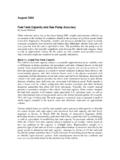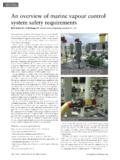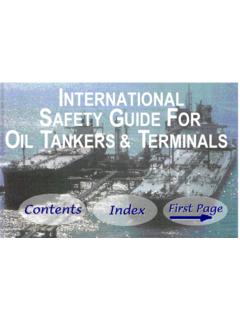Transcription of FEATURE ARTICLE - WW2Ships
1 LIBERTY CARGO SHIP FEATURE ARTICLE written by James Davies for KEY INFORMATION Country of Origin: United States of America Manufacturers: Alabama Dry Dock Co, Bethlehem-Fairfield Shipyards Inc, California Shipbuilding Corp, Delta Shipbuilding Co, J A Jones Construction Co (Brunswick), J A Jones Construction Co (Panama City), Kaiser Co, Marinship Corp, New England Shipbuilding Corp, North Carolina Shipbuilding Co, Oregon Shipbuilding Corp, Permanente Metals Co, St Johns River Shipbuilding Co, Southeastern Shipbuilding Corp, Todd Houston Shipbuilding Corp, Walsh-Kaiser Co. Major Variants: General cargo, tanker, collier, (modifications also boxed aircraft transport, tank transport, hospital ship, troopship).
2 Role: Cargo transport, troop transport, hospital ship, repair ship. Operated by: United States of America, Great Britain, (small quantity also Norway, Belgium, Soviet Union, France, Greece, Netherlands and other nations). First Laid Down: 30th April 1941 Last Completed: 30th October 1945 Units: 2,711 ships laid down, 2,710 entered service. Released by James Davies FEATURE ARTICLE USA OTHER SHIPS 'Liberty' Cargo Ship Contents May 2004 2 of 164 CONTENTS Liberty Cargo Key The Tonnage The Liberty Ship Impact of Liberty Ships on the Britain Builds Emergency The American Emergency Programme is General Cargo Vessel Type Liberty Ship Tanker Type Tanker Collier Type Collier Operational Gallant SAM Liberty Ship Wartime Liberty Ship Overall Liberty Ship Specifications (As-Built).
3 23 Major Passenger Hospital Repair Tank Transports and Boxed Aircraft Appendix A: Surviving Jeremiah O Released by James Davies FEATURE ARTICLE USA OTHER SHIPS 'Liberty' Cargo Ship Contents May 2004 3 of 164 John W Lane Appendix B: Production Ship Construction Ship Construction Time, 1942 Ship Construction Time, Individual Appendix C: Ship General Cargo Type Alabama Dry Dock Bethlehem-Fairfield California Shipbuilding Delta Shipbuilding J A Jones Construction Co (Brunswick)..79 J A Jones Construction Co (Panama City)..82 Kaiser Marinship New England Shipbuilding North Carolina Shipbuilding Oregon Shipbuilding Permanente Metals Co Southeastern Shipbuilding St Johns River Shipbuilding Todd Houston Shipbuilding Walsh-Kaiser Tanker Type California Shipbuilding Delta Shipbuilding Collier Type Delta Shipbuilding Released by James Davies FEATURE ARTICLE USA OTHER SHIPS 'Liberty' Cargo Ship Introduction May 2004 4 of 164 INTRODUCTION Background It is said of the armed services that amateurs study tactics, whilst professionals study logistics.
4 This truism highlights the fact that wars can only be won if the fighting services receive the supplies they need at the time that they need them. For many of the nations involved in the Second World War these supplies had to travel across the seas at least once, and often twice or more, before they reached their ultimate destination. These supplies were carried in the merchant ships of nearly all countries of the world, even those who were 'neutral' in the war. Island nations (such as Great Britain and Japan) relied heavily on imports to sustain their manufacturing industry and to provide food for the population, as well as on coastal traffic to move materials around the country.
5 Many other nations were also dependant to a greater or lesser extent on the sea. Germany required oil, iron ore and small quantities of other key materials for use in manufacturing, as well as luxuries for the population (coffee, for example). The United States of America relied heavily on oil and coal shipments around the coast, as well as benefiting greatly from international trade in the completed products. The Australian and New Zealand economies were built around food exports (predominantly to Britain), and Canada too had significant trade passing through her ports. In those days before widespread 'flags of convenience', ships usually flew the flag of the nation where the owners of the vessel were based.
6 Ships could expect treatment at sea or in port to be directly influenced by the flag flown, and could expect as a right the assistance of the navy of the nation to which they belonged. In return for this protection nations had the right to requisition ships flying their flag in time of war. The relative sizes of the merchant navies on the outbreak of war in Europe are shown below. The relative importance of sea trade to a nation is approximately in proportion to the size of its merchant fleet. (Over 90% of the British Empire ships were registered in the UK). Figure 1: Size of the World Shipping Fleets (1939) Released by James Davies FEATURE ARTICLE USA OTHER SHIPS 'Liberty' Cargo Ship Introduction May 2004 5 of 164 The Tonnage War The hopes for German victory at sea were founded on winning a tonnage war.
7 The concept of a tonnage war is to sink more ships than the enemy can build. Every ship lost is important not because the cargo carried in that ship does not reach its destination, but because all future cargoes that might have been carried by that ship also do not reach their destination. If there are no replacement ships, imports gradually decline, leaving industry without materials and / or the population without food. If replacement ships are available, the loss of ships causes only distress to the families involved and minor inconvenience to industry from the occasional loss of a particularly important cargo.
8 At the start of the war the British and Commonwealth shipyards were filled to capacity with warships, and there was little remaining capacity for building merchant shipping. Some ships were acquired from other nations, however as much of the world s fleet was already trading with the British Empire there was only limited opportunity to gain ships from elsewhere. In this environment the tonnage war was hugely successful. In 1940, for every 2,000 tons of Allied and neutral ships built, 9,000 tons were sunk. In 1941 the ratio was significantly better, at 4,000 tons built for every 9,000 tons sunk, but still clearly unsustainable (see Figure 2).
9 Figure 2: Ratio of Losses (All Causes) to New Construction During 1942-1943 the tonnage war faltered, then finally failed. There was no single reason for this, however the improvement in the number and experience of escorts and the widespread adoption of technological breakthroughs were important factors, as was the secret war fought by the code breakers. Also of great importance was the massive increase in the shipbuilding capacity of America, of which the Liberty Ship formed the foundation. The Liberty Ship Programme In 1936, well over 90% of the American merchant fleet was more than 20 years old.
10 In order to ensure that America possessed a fleet that was adequate to meet the future anticipated needs a decision was made to greatly expand America's merchant fleet. The fleet was to be owned and operated by American companies, and in order to ensure their success the American government decided to subsidise the building costs and operating expenses of the ships. As yet there was little urgency in the programme, run by the US Maritime Commission. In 1941, faced with war already underway in Europe and an expectation of war with Japan, there was seen to be a need to expand the pre-war programme with a ship that could be built rapidly.





